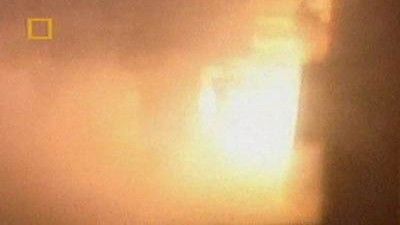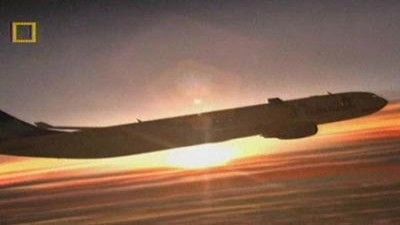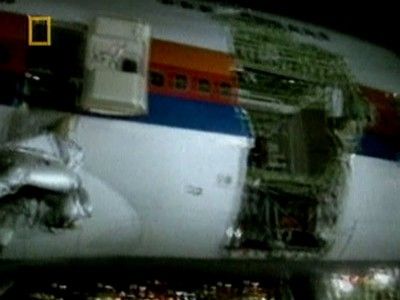The BEST episodes of Mayday season 1
Every episode of Mayday season 1, ranked from best to worst by thousands of votes from fans of the show. The best episodes of Mayday season 1!
Revealing the dark truth that aviation safety improves one crash at a time, Mayday investigates legendary aviation disasters to find out what went wrong and why. Based on cockpit voice recorders, accident reports and eyewitness accounts, every episode also features interviews, state-of-the-art CGI and gripping reenactments.

#1 - Fire on Board (Swissair, Flight 111)
Season 1 - Episode 6 - Aired 10/22/2003
Swissair Flight 111 (SR-111, SWR-111) was a Swissair McDonnell Douglas MD-11 on a scheduled airline flight from John F. Kennedy International Airport in New York City, United States to Cointrin International Airport in Geneva, Switzerland. This flight was also a codeshare flight with Delta Air Lines. On September 2, 1998 the aircraft used for the flight, registered HB-IWF, crashed into the Atlantic Ocean southwest of Halifax International Airport at the entrance to St. Margarets Bay, Nova Scotia. The crash site was 8 km from shore, roughly equidistant between the tiny fishing and tourist communities of Peggys Cove and Bayswater. All 229 people on board were killed. The resulting investigation by the Transportation Safety Board of Canada (TSB) took over four years and cost US$39 million (CAD$57 million). Their main conclusion was that flammable material used in the aircraft's structure allowed a fire to spread beyond the control of the crew, resulting in the loss of control and crash of the aircraft Flight: Swissair Flight 111 AKA: Fire in the Sky

#2 - Flying on Empty (Air Transat, Flight 236)
Season 1 - Episode 4 - Aired 10/8/2003
Air Transat Flight 236 was an Air Transat route between Toronto and Lisbon flown by Captain Robert Piché and First Officer Dirk Dejager. On August 24, 2001, the flight ran out of fuel over the Atlantic Ocean with 306 people (293 passengers + 13 crew) aboard. The flight crew was able to successfully land the plane in the Azores with no loss of life. Flight: Air Transat Flight 236

#3 - Cutting Corners (Air Alaska Flight 261)
Season 1 - Episode 5 - Aired 10/15/2003
On 31 January 2000, Alaska Airlines Flight 261 crashes into the Pacific Ocean, killing all 88 people on board. The horizontal stabilizer had jammed due to an improperly maintained jackscrew.

#4 - Flying Blind (Aeroperu, Flight 603)
Season 1 - Episode 3 - Aired 9/17/2003
AeroPeru Flight 603 was a scheduled flight from Jorge Chávez International Airport in Lima(LIM), to Comodoro Arturo Merino Benítez International Airport in Santiago, which crashed on October 2, 1996. The flight originated in Miami, Florida. On October 2, 1996, just past midnight, the Boeing 757 airliner crew, shortly after takeoff, reported receiving contradictory emergency messages, such as rudder ratio, overspeed, underspeed and flying too low, from the onboard computer; asked for an emergency to be declared and decided to return to base. Faced with the contradictory warnings, the pilot decided to descend. It was only when one wing touched water, almost an hour after emergency declaration, that the pilots realized how confused and disoriented they were. All nine crew members and sixty-one passengers died. Flight: AeroPeru Flight 603

#5 - Unlocking Disaster (United Airlines, Flight 811)
Season 1 - Episode 2 - Aired 9/10/2003
United Airlines Flight 811, a Boeing 747-122 (registration number N4713U), took off from Honolulu International Airport bound for Sydney, Australia, via Auckland, New Zealand with 3 flight crew, 15 flight attendants, and 337 passengers aboard. As the 747 climbed to between 22,000 and 23,000 feet the R5 cargo door tore open, decompressing the cabin and leaving a gaping hole. Five rows of business class seats were blown out of the aircraft, along with nine passengers. Severely injured, a flight attendant was lying down beside the hole caused by the decompression. Because the cabin was no longer pressurized, the pilots initiated an emergency descent to reach an altitude with breathable air. The explosion had knocked out the number three engine and the number four engine caught fire. Despite only partial flaps (a portion of the shed fuselage damaged the flaps on one wing) and concerns over the plane's landing gear and structural integrity, the crew made a perfect landing and deployed all ten evacuation slides on the aircraft. The evacuation was completed in 90 seconds, with no additional injuries occurring. Flight: United Airlines Flight 811 AKA: Ripped From the Sky

#6 - Racing The Storm (American Airlines, Flight 1420)
Season 1 - Episode 1 - Aired 9/3/2003
American Airlines Flight 1420 was a flight from Dallas/Fort Worth International Airport to Little Rock National Airport. On June 1, 1999, a McDonnell Douglas MD-82 (registration number N215AA) overran the runway upon landing in Little Rock and crashed. According to the NTSB's report, the crew of Flight 1420 learned that the winds were changing direction and that a windshear alert had sounded on the airport due to a thunderstorm nearby. The crew was originally told to expect Runway 22L for landing but requested a change to Runway 4R. As the aircraft approached Runway 4R, a severe thunderstorm arrived over the airport. The controller's last report to the crew prior to landing stated that the winds were 330 degrees at 28 knots. During the rushed approach, the pilots had failed to arm the spoilers, devices atop the wings that reduce lift by "spoiling" airflow. After landing, the first officer stated, "We're down. We're sliding." The aircraft never fully settled onto its landing gear and therefore braking was ineffective. Despite the application of brakes and reverse thrust, the aircraft skidded off the far end of the runway at high speed and crashed into an approach lighting tier, ending up on the banks of the Arkansas River. Such structures are usually frangible - i.e. designed to shear off on impact - but because the approach lights were located on the unstable river bank, they were firmly anchored and the impact destroyed the aircraft. It broke into three pieces and ignited. The pilot, one of six crew members, died in the crash, along with 10 of the 139 passengers. Flight: American Airlines Flight 1420 AKA: Fatal Landing